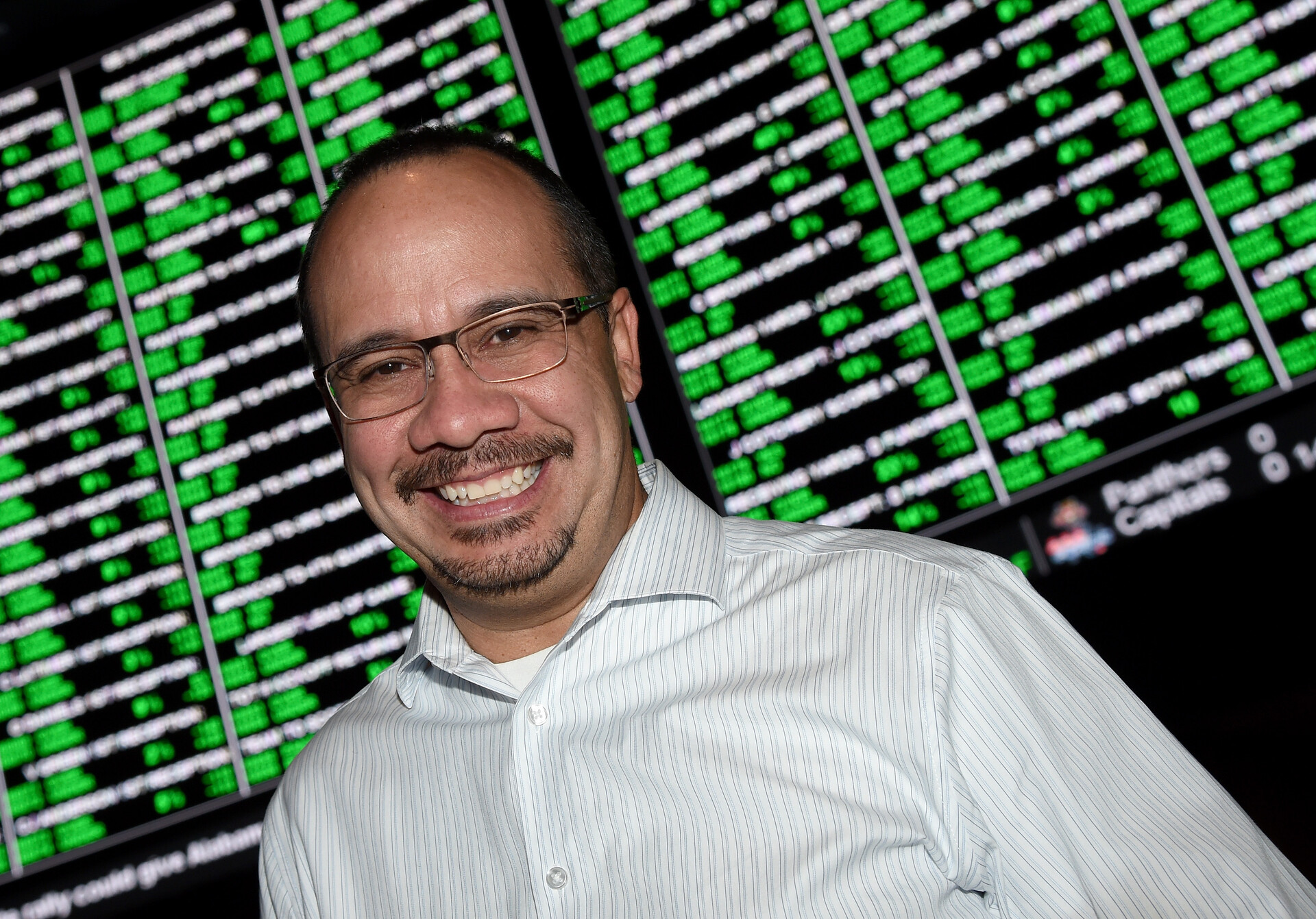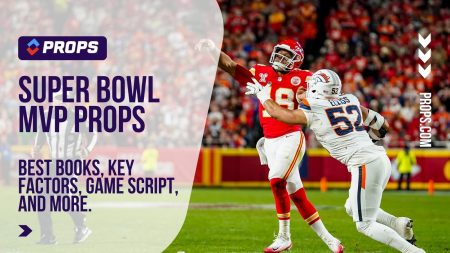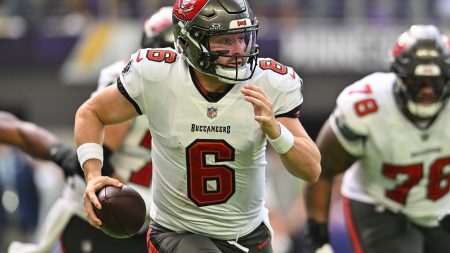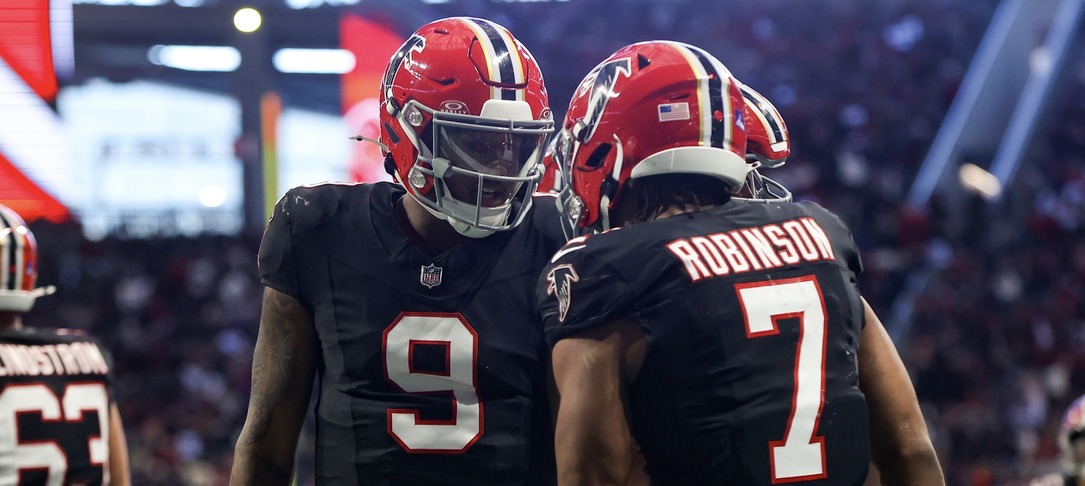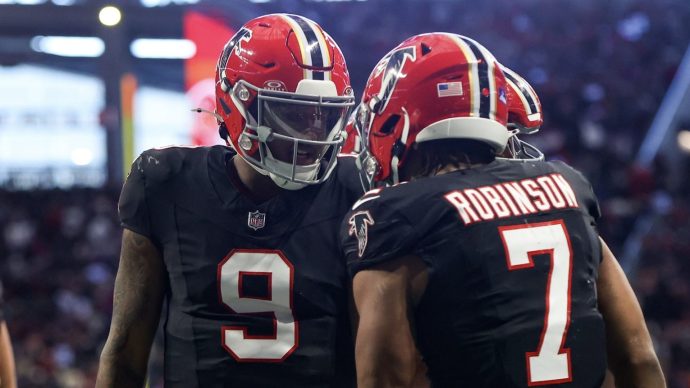At roughly 7 p.m. PT Thursday, the massive LED odds board inside The SuperBook at the Westgate Las Vegas will go pitch black. Moments later, a member of Jay Kornegay’s team will flip a switch, and that odds board will illuminate with literally hundreds of Super Bowl 56 proposition wagers.
Within minutes, tens of thousands of dollars will change hands between bettors and ticket writers. Those bettors will wager on everything from the passing yardage total for Los Angeles Rams quarterback Matthew Stafford, to whether either team will convert a fourth down, to which team will call the first timeout of Super Bowl 56.
This Super Bowl props reveal has become something of a holiday-like tradition at The SuperBook, where bettors — professional and recreational alike — gather for the annual lighting.
It’s one that slowly evolved from another tradition: A slew of Super Bowl blowouts.
The Cure For Super Bowl Boredom
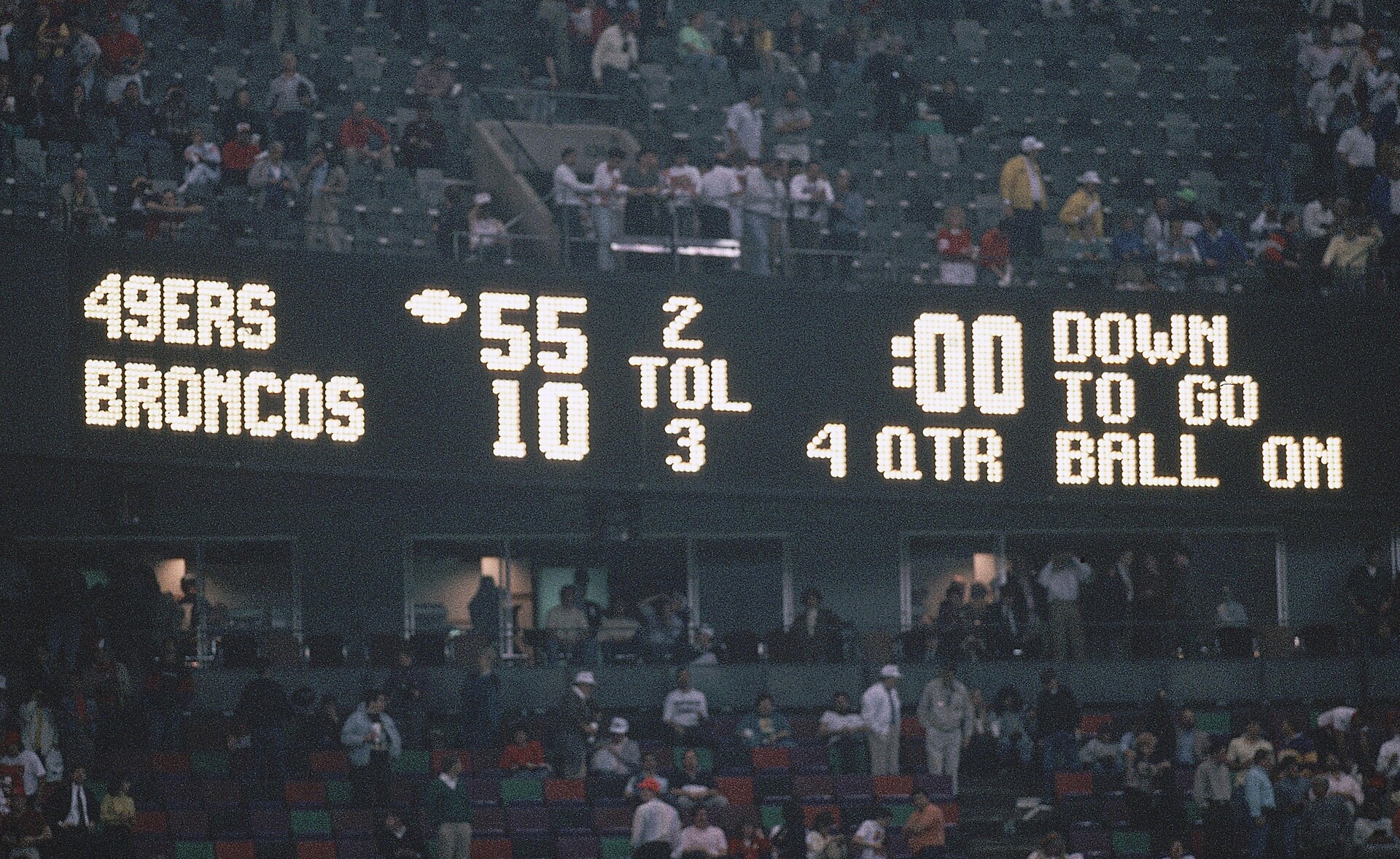
38-9. 38-16. 46-10. 39-20. 42-10. 55-10. 52-17.
For more than 15 years, stretching from the early 1980s to the late 1990s, the biggest event in all of sports had a running theme: consistently lopsided results.
From Super Bowl 18 in 1984 (when the Los Angeles Raiders blasted Washington 38-9) until Super Bowl 33 in 1999 (when Broncos QB John Elway ended his Hall of Fame career with a 34-19 rout of the Falcons), the NFL’s marquee game was almost always a laugher.
Over that 16-year span, 13 Super Bowls were decided by double digits; nine were decided by at least 19 points; and five were decided by more than four touchdowns.
More often than not, by the time the first quarter ended, the only intrigue that remained on Super Bowl Sunday revolved around commercials and halftime performers.
Back in Nevada, the Super Bowl snoozefests that dominated the 1980s sucked the life out of sportsbooks and ballrooms where bettors gathered en masse to watch the Big Game. For sportsbook operators like a young Kornegay, who in 1989 joined the team at the Imperial Palace on the Las Vegas Strip, the challenge was straightforward: Figure out a way to keep bettors engaged for all four quarters of the Super Bowl, regardless of the numbers on the scoreboard.
And with that, the Super Bowl proposition menu — which at first was extremely limited — began to expand.
“What really motivated us were the games themselves,” says Kornegay, the vice president of race and sports operations for The SuperBook, where he’s been since 2004. “Back in the 1980s and early 1990s, almost every Super Bowl was a blowout. They were very boring games. So that’s what really got this going: Let’s try to make up some [more] propositions to keep everybody interested for the whole game. That’s exactly what we did — we came up with propositions that weren’t going to be decided until well into the second half.”
‘The Fridge’ Opens The Door
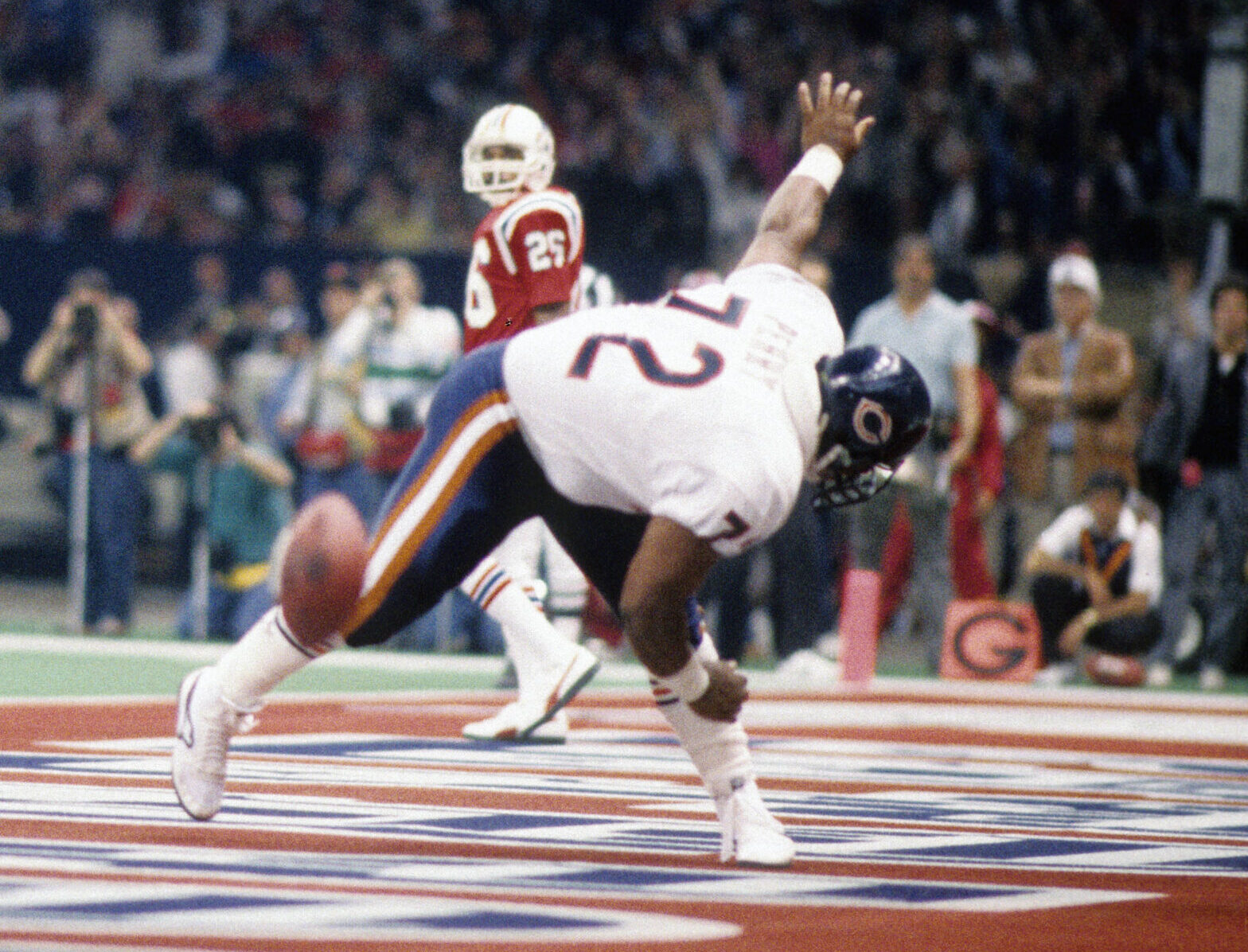
It’s impossible to know what oddsmaker — or, more likely, bookie — cooked up the first Super Bowl proposition wager, or when. But it’s very easy to pinpoint the precise moment when these “side bets” landed on the public’s radar:
On January 26, 1986, the big-bad Chicago Bears were 10-point favorites against the New England Patriots. Prior to kickoff, there wasn’t much doubt that the 15-1 Bears would win their first Super Bowl title that day (and win it they did, 46-10).
There was, however, doubt about something: Would fun-loving, gap-toothed, 340-pound defensive lineman William “The Refrigerator” Perry — who scored two touchdowns on five rushing attempts in the regular season — take a handoff and cross the goal line in the New Orleans Superdome? (As it turned out, the answer was yes.)
While the Perry prop garnered national attention — and cost at least one Las Vegas sportsbook six figures — proposition offerings remained scarce over the next several years. In fact, during his first couple of years at the Imperial Palace, Kornegay’s list of Super Bowl prop bets numbered around 30 and fit on two sides of a single sheet of paper.
“That’s kind of hard to imagine now,” he says with a laugh. “But that’s what it was. And the props were very generic. But they were something that got attention from bettors.”
With each passing Super Bowl blowout, though, Kornegay and his team started tacking on additional props. They also started getting innovative, even dialing up the first cross-sport prop ahead of the Broncos-49ers Super Bowl in January 1990.
Sensing that Joe Montana and the heavily favored 49ers would put up big points against the Denver defense, Kornegay’s boss, Kirk Brooks, suggested this prop: Who will score more points — the 49ers on Super Bowl Sunday or Michael Jordan versus the New Jersey Nets the previous night? Niners backers won on that prop, as San Francisco rolled 55-10, while Jordan put up 39 points against the Nets.
“It was the best team in football versus the best basketball player of all time,” Kornegay says. “That prop was very popular.”
And not just among bettors, either. Other sportsbook operators up and down The Strip cribbed the prop and offered it to their customers — with some even taking credit for creating it.
“You’d see them in interviews being asked, ‘Hey, how did you come up with this great prop?’ and the response was something like, ‘Well, I was thinking, you know, Michael Jordan is playing on Super Bowl weekend, so why not …” Kornegay recalls while laughing. “And Kirk was so infuriated at that. I told him, ‘Ah, just be flattered.’ We ran with that joke for years afterward.”
Not lost in that anecdote is the fact that the Imperial Palace sportsbook was indeed blazing a trail with its Super Bowl props. In fact, as the phenomenon grew steadily in the early 1990s, Kornegay estimates his shop was “doubling the market” on the number of props presented to customers.
That said, he’s quick to downplay that he and his colleagues were pioneers of any sort.
“A lot of people give us credit for ‘inventing’ certain propositions,” Kornegay says. “And I always tell people, ‘Listen, we didn’t come up with these. They were available. We just added to the menu and got really creative with some of them.’”
That creativity went to new heights in January 1995.
Give The Chargers Some Props

Prior to the 1994 season, the San Diego Chargers had never appeared in a Super Bowl (and they haven’t in 28 seasons since). But in January 1995, the Lightning Bolts caught fire in the postseason, stunning the heavily favored Steelers in Pittsburgh in the AFC Championship Game to punch their ticket to Miami for Super Bowl 29.
Awaiting the Chargers in South Beach were none other than Steve Young, Jerry Rice and the still-dominant 49ers. Knowing they had a mismatch on their hands, Vegas oddsmakers did two things: They installed the 49ers as an 18.5-point favorite — to this day, the largest point spread in Super Bowl history — and they went bonkers with their Super Bowl proposition menu.
Once again, Kornegay’s crew led the charge.
“There was no doubt who was going to win that game,” Kornegay says of the 49ers-Chargers clash. “So we took the proposition menu to another level that year — we probably had 150-200 different propositions on that game.
“Things had gained momentum prior to 1995, but it really took off that year when we came up with some crazy propositions.”
While 49ers and Chargers fans will remember Super Bowl 29 for turning into the blowout everybody saw coming — San Francisco cruised 49-26 — sportsbook operators will remember it as the day the Super Bowl props game changed forever.
By the late 1990s, most bookmakers were writing more action on props than the game itself — something that continues to this day. By the time The SuperBook takes its last bet right before Rams-Bengals kicks off, Kornegay estimates 70 percent of all money wagered on Super Bowl 56 will be on props.
And that two-sided single sheet of paper that used to contain about 30 Super Bowl prop bets back around 1990? At The SuperBook, it’s now as thick as a small book, with about 500 props printed, front to back, on nearly three dozen legal-size pages held together (barely) with a staple.
“It was kind of a shock to us how popular these things got,” Kornegay says. “But it’s gotten to the point where every single play in the [Super Bowl] is involved in at least one proposition.
“It even starts before the game. You should be in a sportsbook anywhere in Nevada during the coin toss. You’d be like, ‘Oh my gosh, I can’t believe how many people bet the coin toss!’ And it’s literally a coin toss! But it gets really quiet, then a player [on the field] calls heads, the referee announces ‘Heads’, and there’s a roar in the room.”
No House Advantage

Another thing that’s changed over the years: The general public’s perception of prop bets. There was a time not long ago when sportsbooks were chastised for trying to entice unsavvy bettors into making “sucker bets” that overwhelmingly favor the house.
Today, everyone recognizes that value opportunities exist with prop bets (in all sports). It’s why some professional bettors completely eschew the Super Bowl side and total and instead invest solely in various prop wagers.
“Soon after the proposition menu began to expand, we had a number of sharp players betting these things,” Kornegay says. “That grabbed our attention and made us realize, ‘We really have to focus on this, because there are some really sharp people out there whom we respect who are betting these props. So we have to make sure we book them correctly.’”
For nearly 20 years, that job at The SuperBook has fallen to a pair of Kornegay’s trusted comrades: Ed Salmons and Jeff Sherman. That duo begins mapping out a game plan for Super Bowl props two weeks before the matchup is even set. Some 48 hours after the participants are determined, Salmons, Sherman and a few colleagues lock themselves in a room for more than two days, crunching numbers and establishing odds for every prop.
Additional manpower is required to input each prop into the computer; proofread and assemble the hard-copy packets; and write and review disclaimers. The latter is particularly important.
“We’re not looking to trick anybody,” Kornegay says. “The Super Bowl brings out a very novice [betting] crowd, so we want to make it clear as day for all our customers that they understand exactly what it is they’re betting. Transparency is the name of the game, which is why we clearly state the rules and disclaimers for everybody to see.”
‘The Grandfather Of All Props’
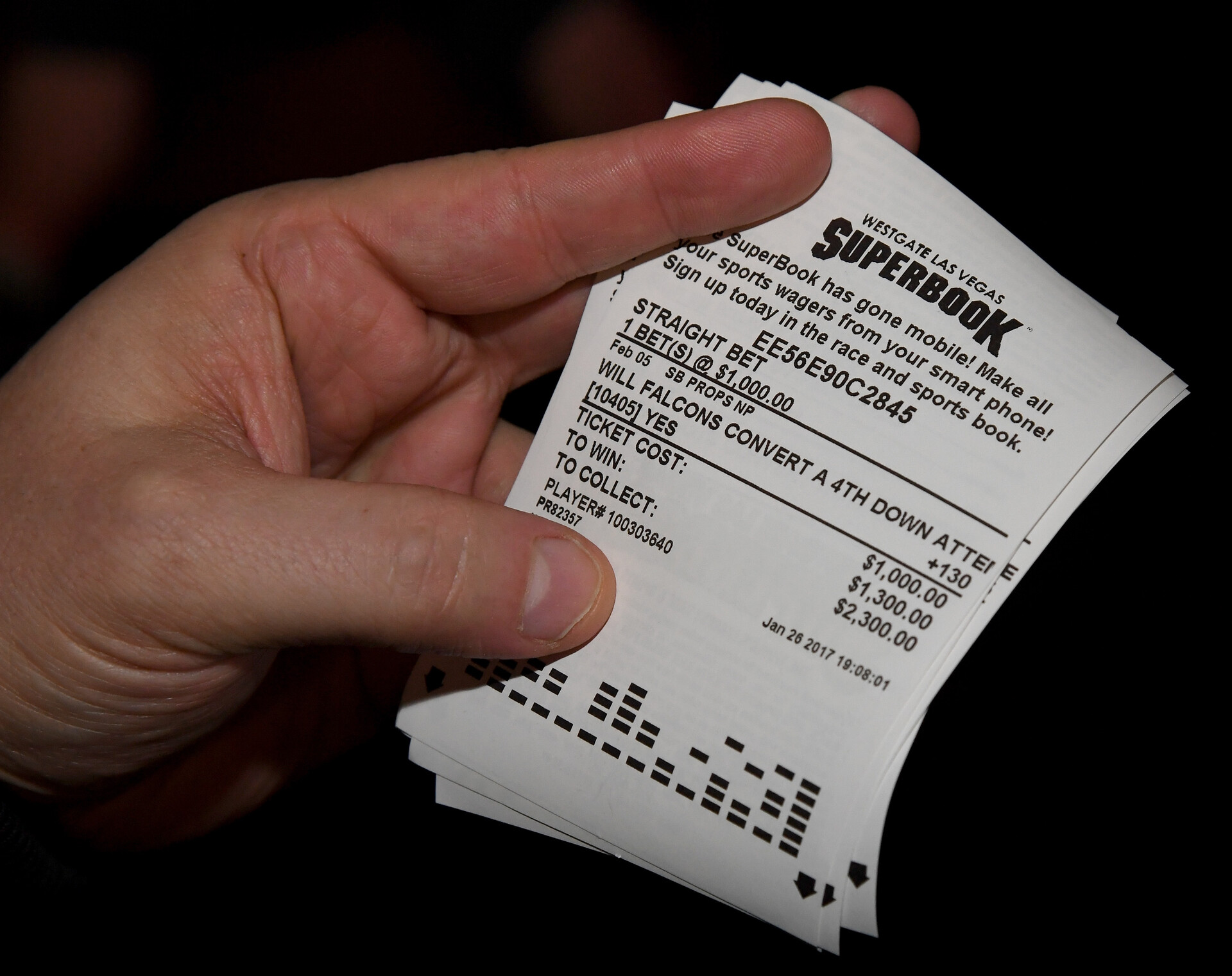
The most popular Super Bowl prop bet? It’s almost always “Which player will score the first touchdown?” As for Kornegay’s favorite, he leans toward an oldie but a goodie: Will either team score three consecutive times (not including points-after-touchdowns) without the other team scoring once?
“We call that the grandfather of all props,” Kornegay says. “Because it’s the first one that really dug deep and forced bettors to stop and think before betting it.”
He also likes it for another reason: “It actually came from a customer. There are a handful of propositions today that are on the menu each year that were suggested by our patrons. We still [get suggestions] every year. And while we pretty much have it all covered now, as long as any [suggested prop] isn’t too complicated and there’s no gray area, we’ll consider it.”
And why not? After all, the goal is the same today as it was more than 30 years ago: Keep bettors engrossed in the sports world’s grandest spectacle until the final whistle.
“A lot of us have been working together since the early 1990s — a lot of our team is still the same,” Kornegay says. “So we do have a sense of pride that we were able to give our customers unique offerings to help make the Super Bowl a little more fun — regardless of what the score of the game is.
“So even though the game might end up being boring, these propositions keep things lively until the clock runs out.”

